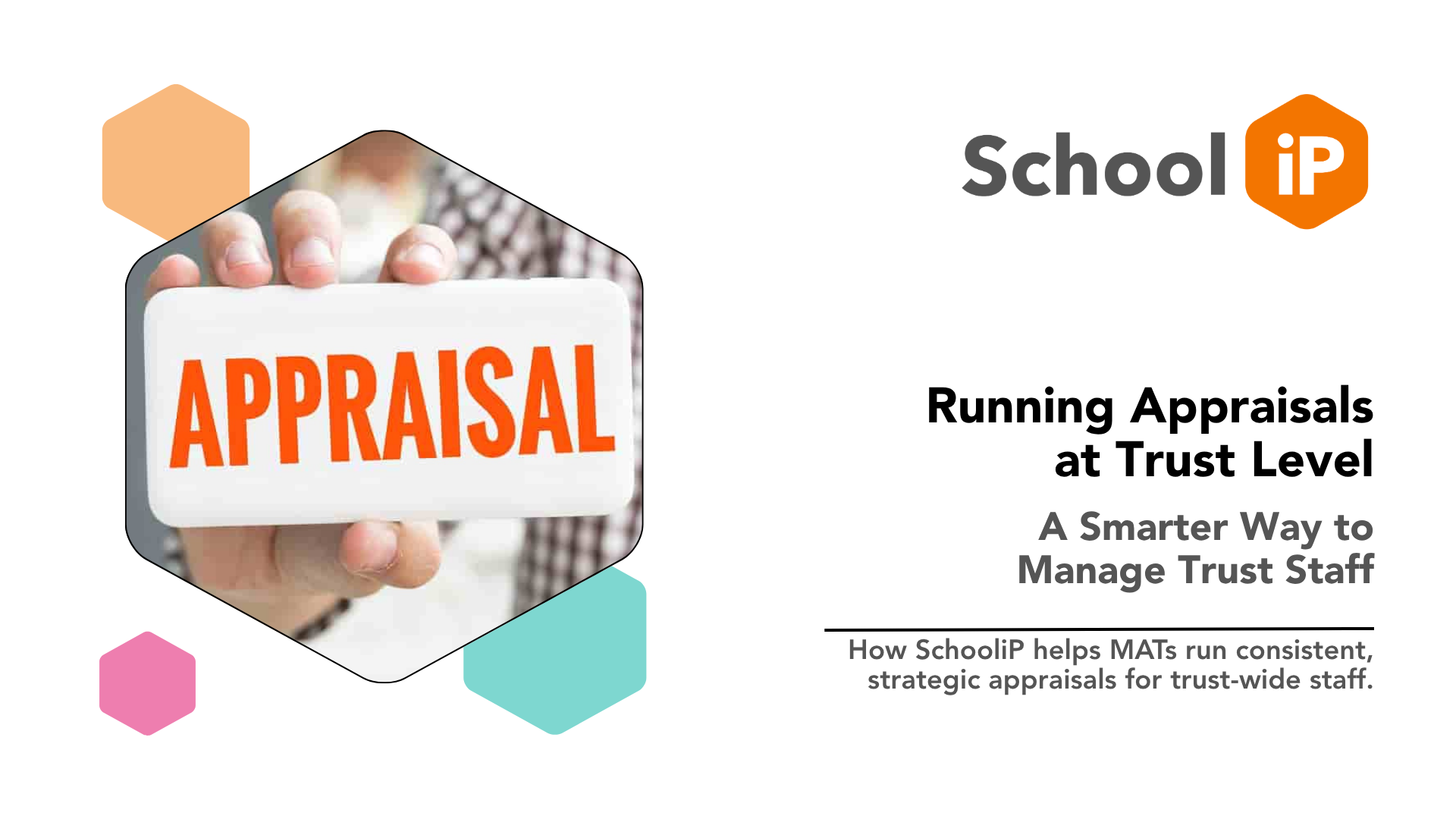Running Appraisals at Trust Level – A Smarter Way to Manage Trust Staff


In a multi-academy trust, trust-level roles, from executive leaders to improvement partners and finance directors, are critical to driving improvement across schools. Yet these roles often sit outside school-based systems for appraisal and development.
Without a centralised process, performance management becomes inconsistent, and it’s difficult for trust leaders to align objectives with organisational priorities. Worse still, valuable insights and accountability mechanisms are lost in the gaps between schools and central teams.
Most MATs have some kind of performance management process in place for headteachers and school staff, but central roles often fall into a grey area. Appraisals may be handled offline, through spreadsheets, isolated documents, or informal check-ins.
This raises a number of challenges:
No consistent format or structure
No link to strategic objectives or improvement plans
No easy way to review or report across central roles
No visibility for the board or executive team
As MATs scale, this becomes a growing risk. Central teams are influential, but without structured appraisals, they lack the same professional development support and accountability expected in schools.
SchooliP makes it simple to include all trust-level staff in your appraisal and development processes. Whether you’re managing a CEO, CFO, governance lead, or operations manager, SchooliP brings everyone into the same, structured environment, with the flexibility to tailor objectives to each role.
Here’s how it works:
One Platform, All Roles: Trust staff can be added to SchooliP just like school-based employees. Their line managers, whether that’s the CEO, COO, or Chair, can assign objectives, hold reviews, and capture evidence in the same way.
Strategic Objectives: Appraisals for central roles can be directly linked to the trust’s improvement plan, board priorities, or growth strategy, turning individual performance into organisational progress.
Flexible Frameworks: Create custom appraisal templates for different trust functions. Set competencies and KPIs for finance, HR, school improvement, estates, or executive leadership.
Complete Oversight: Senior leaders and trustees can view high-level reports showing how central teams are performing, where support is needed, and how goals align with the overall direction of the trust.
When trust staff have clear objectives, consistent reviews, and ongoing development, the whole organisation benefits. A culture of performance management, done well, builds confidence and accountability across every layer of your MAT.
It also ensures that:
Executive roles model best practice for performance management
Strategic priorities are reflected in everyone’s day-to-day work
Development isn’t just for schools, it’s for central teams too
In many trusts, central roles are expanding faster than systems can catch up. SchooliP provides the missing link, giving trust leaders a consistent, professional, and strategic way to manage performance and development beyond the school gates.
With SchooliP, you can manage all staff, school or trust-wide, in one place. Because improvement doesn’t stop at the school level. It starts at the centre.